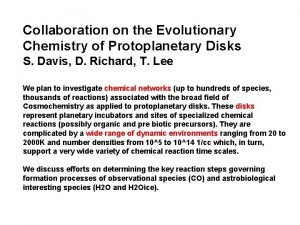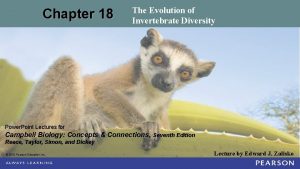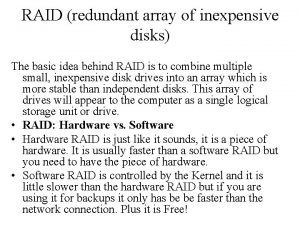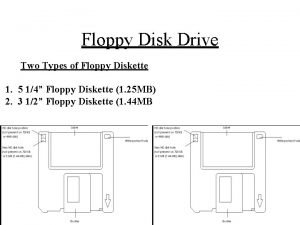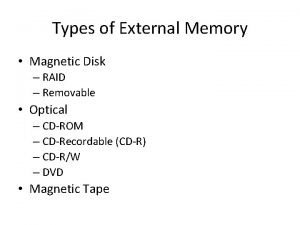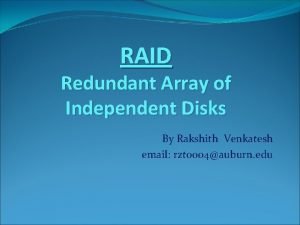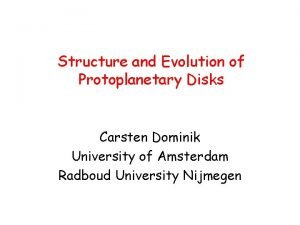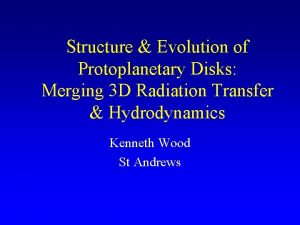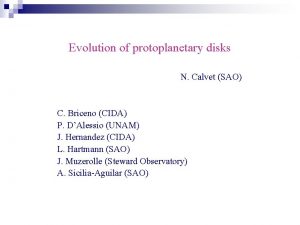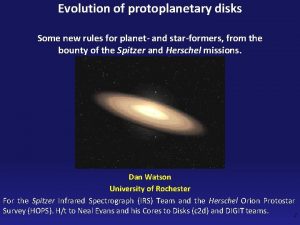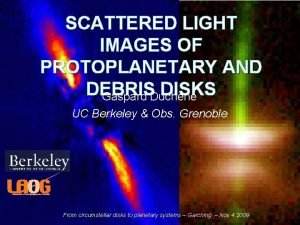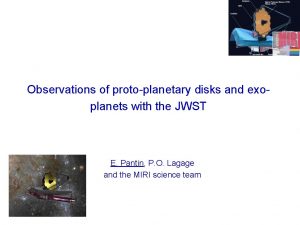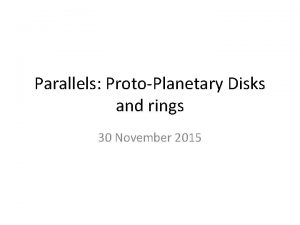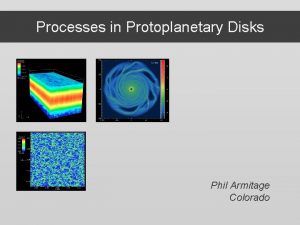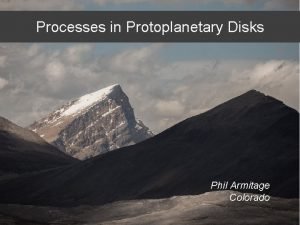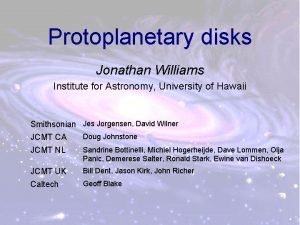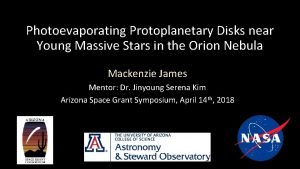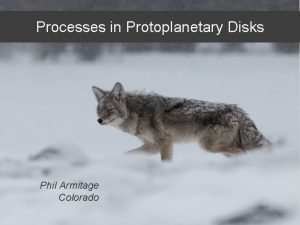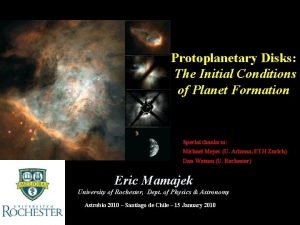The Evolution of Protoplanetary Disks and the Diversity

















- Slides: 17

The Evolution of Protoplanetary Disks and the Diversity of Giant Planets Extreme Solar Systems II September 2011 Ben Bromley Scott Kenyon Physics and Astronomy University of Utah Extreme Solar Systems II Physics & Astronomy, University of Utah Smithsonian Astrophysical Observatory Fall 2011

Diversity of planets the Solar System: Is it extreme? Physics and Astronomy University of Utah Extreme Solar Systems II Fall 2011

Planet formation theory and practice n Young stars: gas/dust disk n Coagulation and dynamics; collisional accretion (many, small few, large) n n Debris disks are signposts of planet formation Massive cores accrete gas (entrained debris helps, t. Gas ~ Myr) Physics and Astronomy University of Utah Extreme Solar Systems II Fall 2011

Planet formation: difficulties n Dust-to-planetesimals How do planetesimals grow from micron-sized dust? n Migration How do planetary cores survive (fast, <Myr) migration? n Gas giant formation How do gas giants grow as gas disks vanish? Evolution of the gas disk is critical! Physics and Astronomy University of Utah Extreme Solar Systems II Fall 2011

Modeling disk evolution • Initial conditions (Mdisk = 0. 003— 0. 1 MStar; solid: gas ~ 0. 01; S ~ 1/a 0. 6— 1. 5) • Input physics (alpha disk: a = 10 -5— 0. 01; t. Disk ~ 1/a ~ 1— 10 Myr) • evolving the disk (solve diffusion equation) HSolid ~ √α Timing is everything. Physics and Astronomy University of Utah Extreme Solar Systems II Fall 2011

Simulating planet formation PLANETESIMALS: pebbles—plutos COAGULATION CODE mergers, fragmentation a-viscosity… photoionization FORMATION TIME: 0. 1— 1 Myr (cores) 1— 10 Myr (J, N, SE) 10— 100 Myr (Earths) growing planetesimals collisional cascade N-BODY CODE scattering, collisions gas accretion atmospheres (L, R) migration Physics and Astronomy University of Utah Extreme Solar Systems II Fall 2011 evolve gas, planetesimals, planets in concert

Growth of a planetary system 15 m / MEarth semimajor axis (AU) 150 15 300 10 Physics and Astronomy University of Utah log time (yr) Extreme Solar Systems II Fall 2011

cumulative fraction Growth of planetary systems: Jupiters++ (> 1 MJupiter) Physics and Astronomy University of Utah log semimajor axis (AU) Extreme Solar Systems II Fall 2011

cumulative fraction Growth of planetary systems: Saturns (15 MEarth— 1 MJupiter ) Physics and Astronomy University of Utah log semimajor axis (AU) Extreme Solar Systems II Fall 2011

cumulative fraction Growth of planetary systems: Earths++ (1— 15 MEarth) Physics and Astronomy University of Utah log semimajor axis (AU) Extreme Solar Systems II Fall 2011

cumulative fraction Growth of planetary systems: planetary masses Physics and Astronomy University of Utah log mass (MJupiter) Extreme Solar Systems II Fall 2011

of planets: disk. Earths+ properties Growth. Diversity of planetary systems: (1— 15 MEarth) cumulative fraction initial disk mass (M ) Jupiters (0— 3) (2— 4) (1— 4) s s n r rth u (0— 3) t a S (5— 10) a E r- e p Su Earths (no gas giants) log disk viscosity parameter (α) Physics and Astronomy University of Utah Extreme Solar Systems II Fall 2011

Results n n Diverse systems of gas giants in alpha-disk model Predictions: Multiplanet systems, ~MEarth— 10’s of Mjupiter High mass, low viscosity disks: Jupiters Low mass, high viscosity disks: Neptunes, super-Earths n Next step: Include photoionization, migration…. Physics and Astronomy University of Utah Extreme Solar Systems II Fall 2011

Simulation summary photoionization Physics and Astronomy University of Utah Extreme Solar Systems II Fall 2011

Simulation summary migration photoionization Physics and Astronomy University of Utah Extreme Solar Systems II Fall 2011

Diversity of planets Dynamics (Architecture) Planetary structure (Radius – Mass, …) Goal: consistent evolution of full system Physics and Astronomy University of Utah Extreme Solar Systems II Fall 2011

Physics and Astronomy University of Utah Extreme Solar Systems II Fall 2011
 Protoplanetary disk
Protoplanetary disk Asymmetrical
Asymmetrical Lesson 5: invertebrate evolution and diversity: 2
Lesson 5: invertebrate evolution and diversity: 2 Invertebrates cladogram
Invertebrates cladogram Chordate evolution and diversity
Chordate evolution and diversity Earliest chordates
Earliest chordates Invertebrate evolution and diversity 2
Invertebrate evolution and diversity 2 Genetic diversity and biodiversity
Genetic diversity and biodiversity Genetic diversity vs species diversity
Genetic diversity vs species diversity Label computer parts
Label computer parts Disks and tapes can be stored ------- a library. eng101
Disks and tapes can be stored ------- a library. eng101 Chapter 18 the evolution of invertebrate diversity
Chapter 18 the evolution of invertebrate diversity Tower of hanoi 4 disks
Tower of hanoi 4 disks Redundant arrays of inexpensive disks
Redundant arrays of inexpensive disks Types of floppy disks
Types of floppy disks Dot matrix printer disadvantages
Dot matrix printer disadvantages Types of external memory
Types of external memory Redundant arrays of independent disks
Redundant arrays of independent disks
